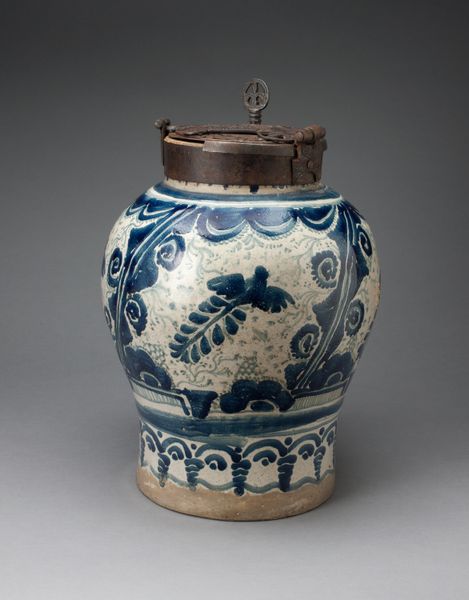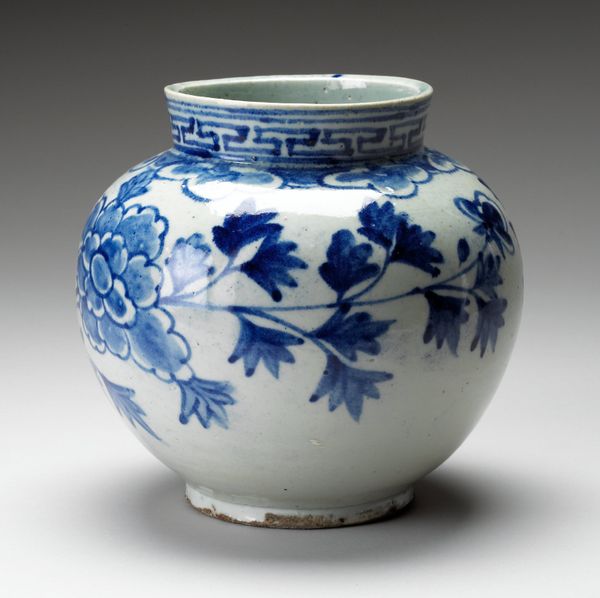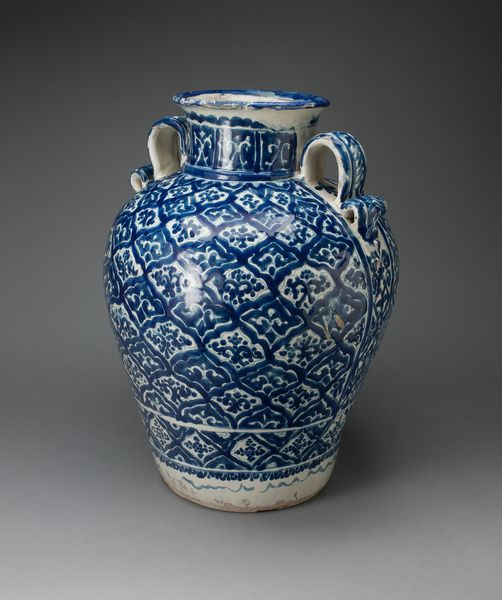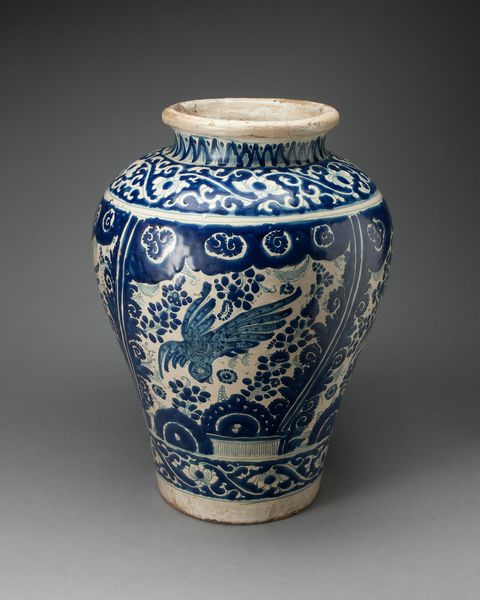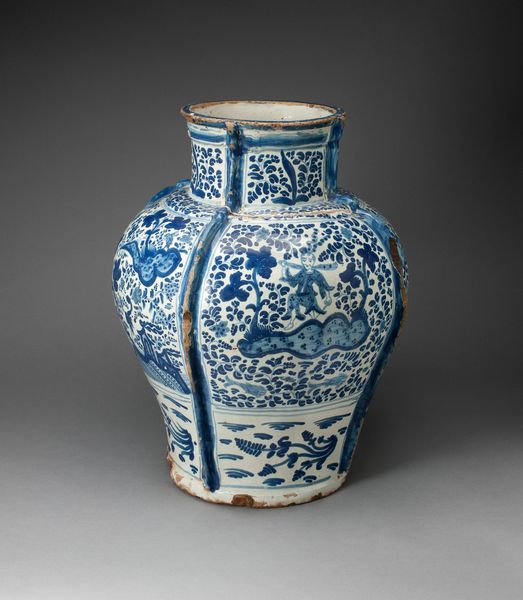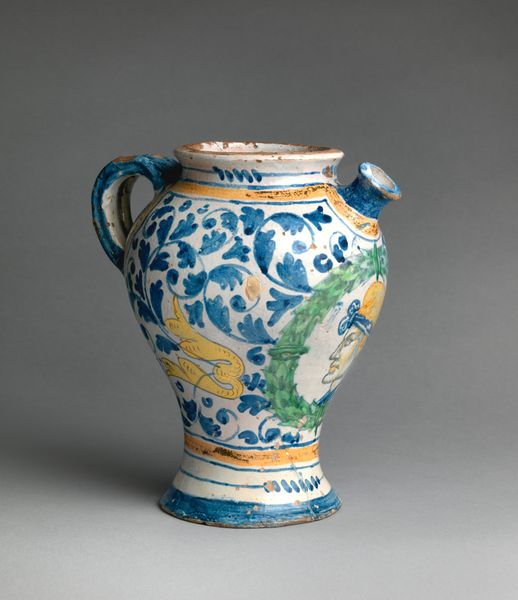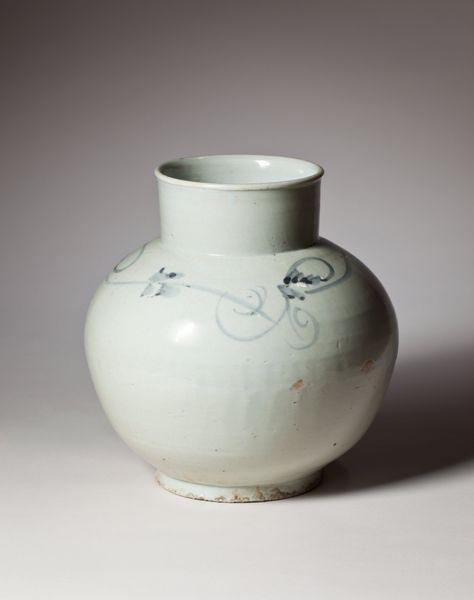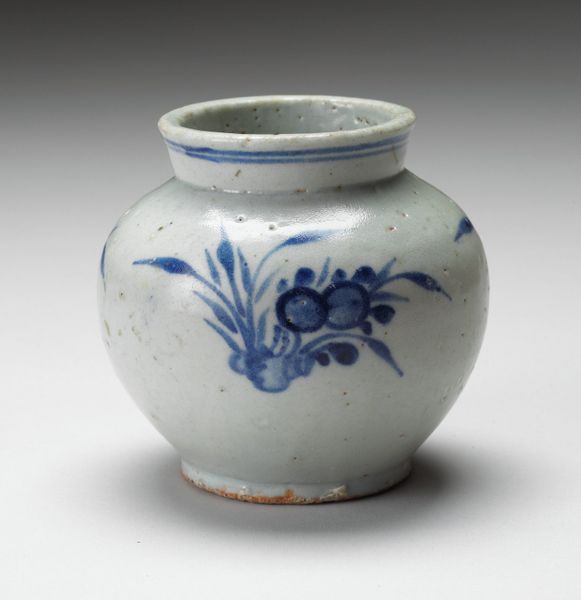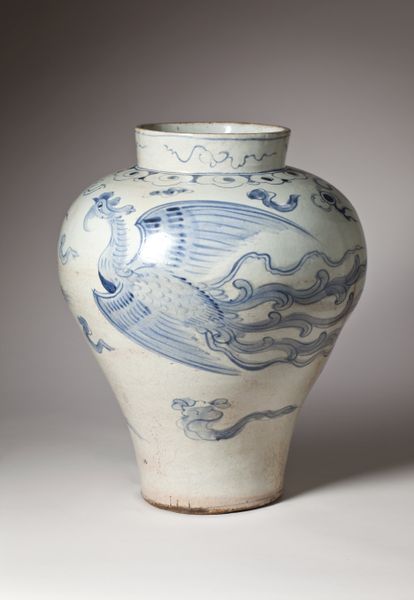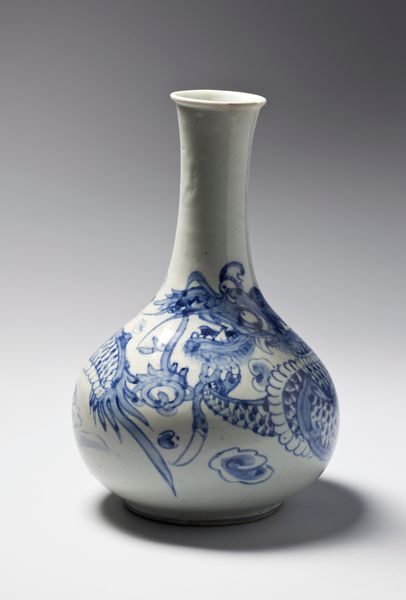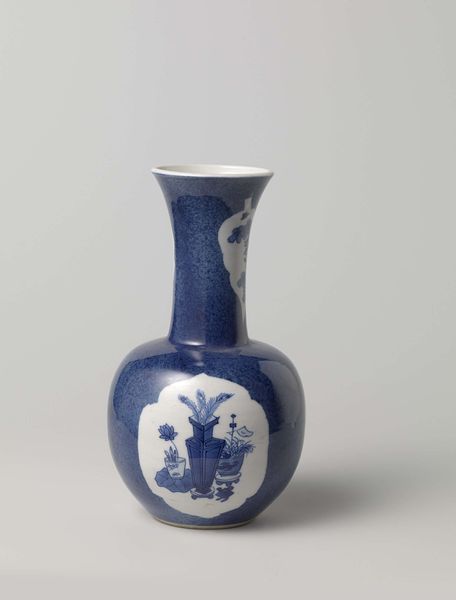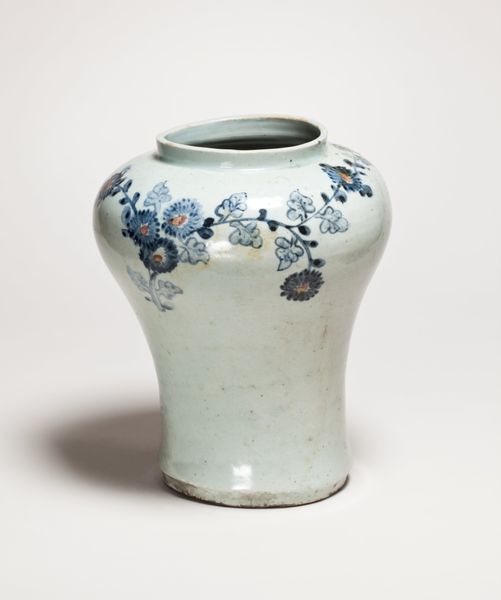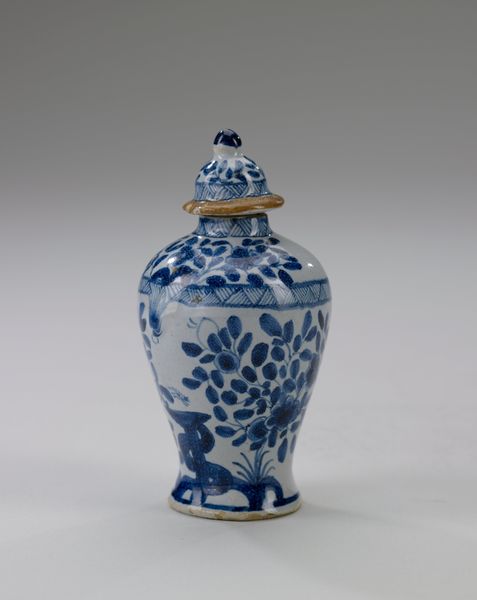
Jar with underglaze cobalt blue and iron-brown designs of fish and leaf scrolls c. 1900
0:00
0:00
ceramic, earthenware
#
ceramic
#
figuration
#
earthenware
#
ceramic
#
islamic-art
Dimensions: 11 11/16 × 12 5/16 × 12 5/16 in. (29.69 × 31.27 × 31.27 cm)
Copyright: Public Domain
Curator: Looking at this piece, the first thing that strikes me is its vibrant, almost playful energy. The fluid brushstrokes and the slightly off-kilter asymmetry give it a lively, almost whimsical feel. Editor: Yes, there’s a buoyant quality! Let’s consider this earthenware jar. The Minneapolis Institute of Art has it cataloged as dating from around 1900. It’s decorated with underglaze cobalt blue and iron-brown designs, depicting fish swimming amidst leafy scrolls. Curator: Fish, of course, have deep and varied symbolism across cultures. It might seem self-evident but in many societies, it connects to the ideas of prosperity, abundance, and the depths of the unconscious mind. And the placement on this vessel encourages us to consider who had access to the work and what sort of symbolic narratives they found empowering. Editor: The choice of cobalt blue is quite interesting here. Blue is historically associated with the divine, with heaven. When paired with iron-brown earth tones in such an everyday object, you start to perceive the cultural narrative: an acknowledgement of the ever-presence of the divine, permeating the most ordinary aspects of life. This design implies a spiritual awareness ingrained in domesticity and survival. Curator: Right, so we can position the piece within socio-economic patterns of trade and labor of the era. The visual tension between the fish and foliage creates a dynamic dialogue between nature and culture, one where they don’t always align, one suggesting that access to certain natural resources impacts certain community patterns, and potentially excludes other demographics from that abundance. Editor: That asymmetry is intriguing. The eye is not following typical patterns but the imagery blends seamlessly, and in that sense it conveys more of a natural flow to this object that reflects life instead of an artifice. The overall form is somewhat simple; perhaps intended to invite contemplation and ease while its cultural undercurrent subtly inspires spiritual values and prosperity. Curator: Considering this jar now, with a deeper understanding, the question it provokes is how can we use visual art of all forms as both symbol and critical instrument to bring to the surface marginalized experiences within a specific temporal and economic situation? Editor: Indeed. Reflecting upon these themes, I realize the power this humble object possesses— to evoke cultural memory while inspiring a richer conversation across cultural contexts.
Comments
No comments
Be the first to comment and join the conversation on the ultimate creative platform.

